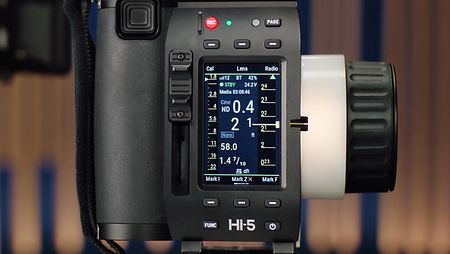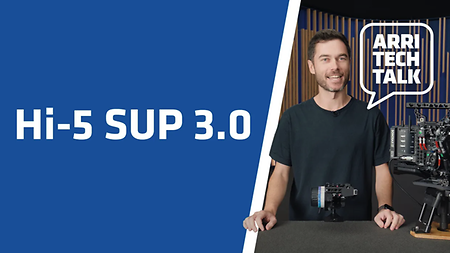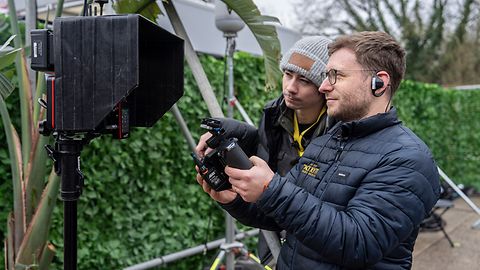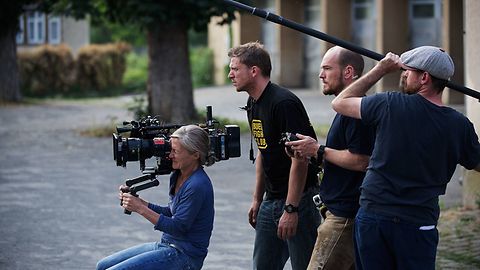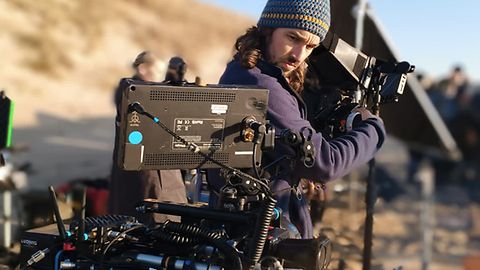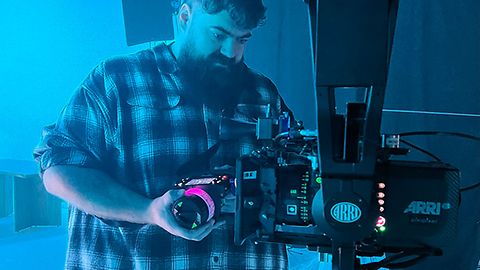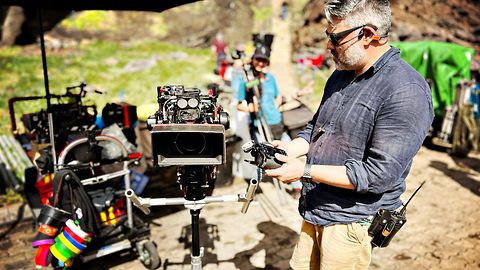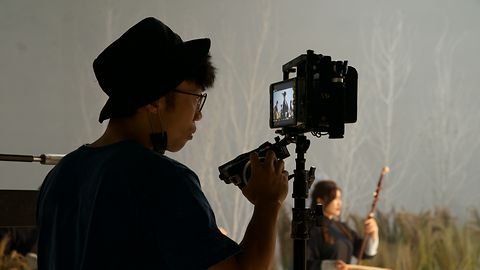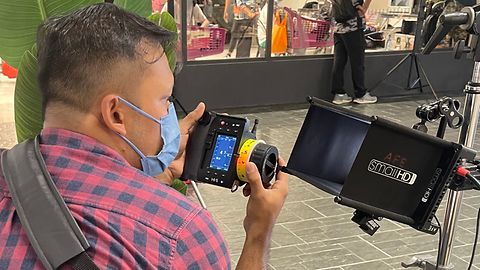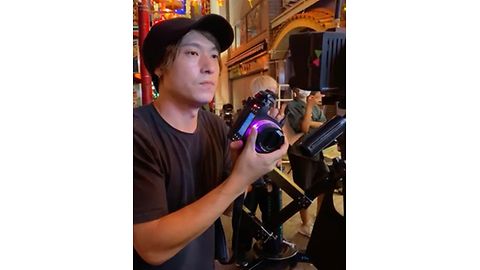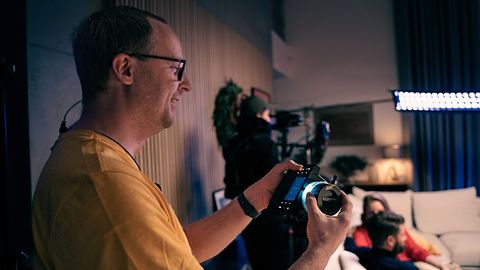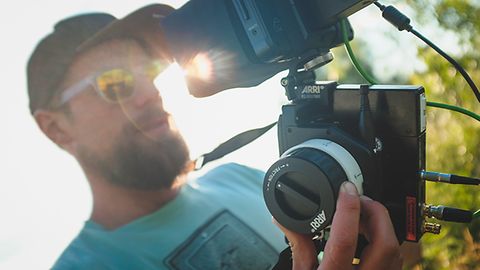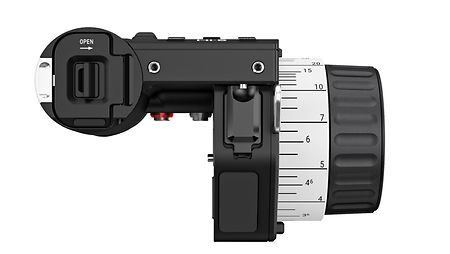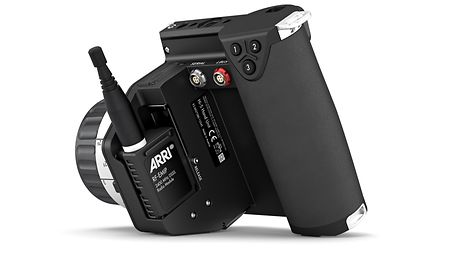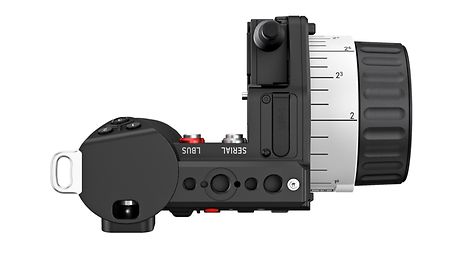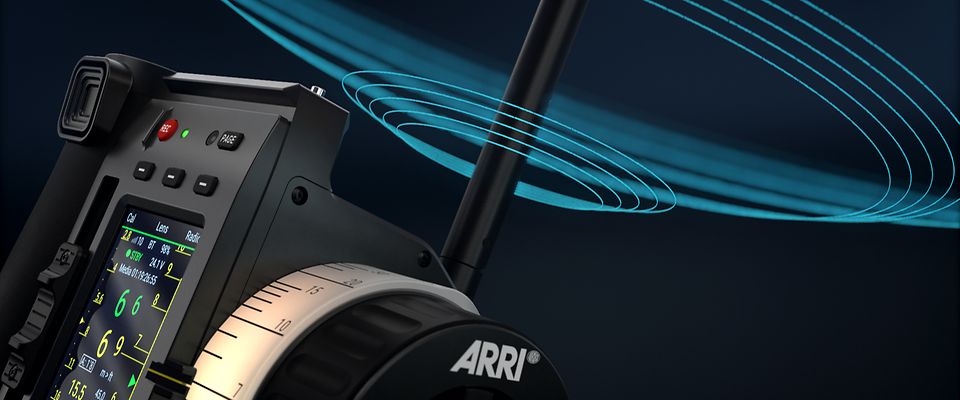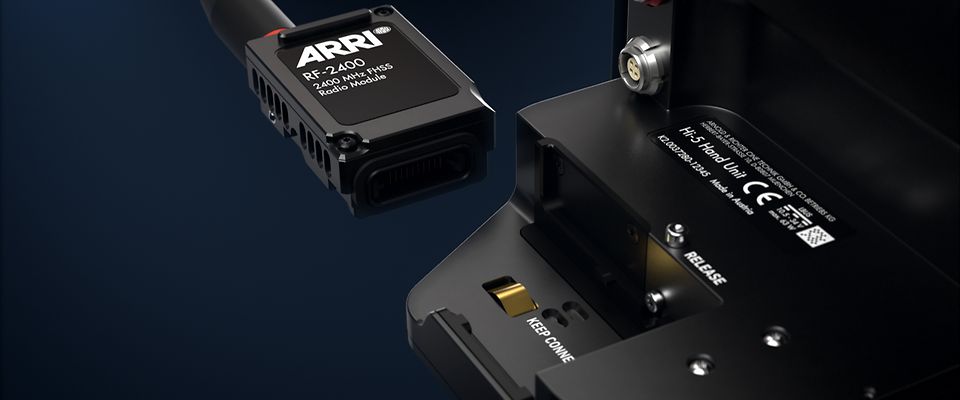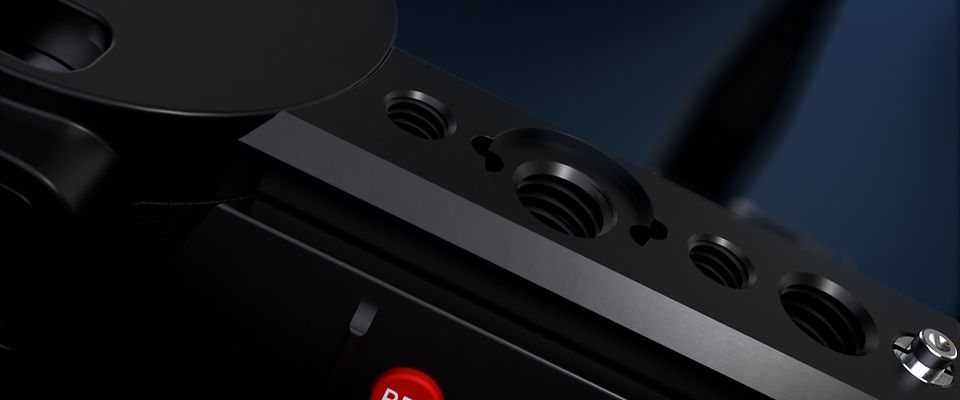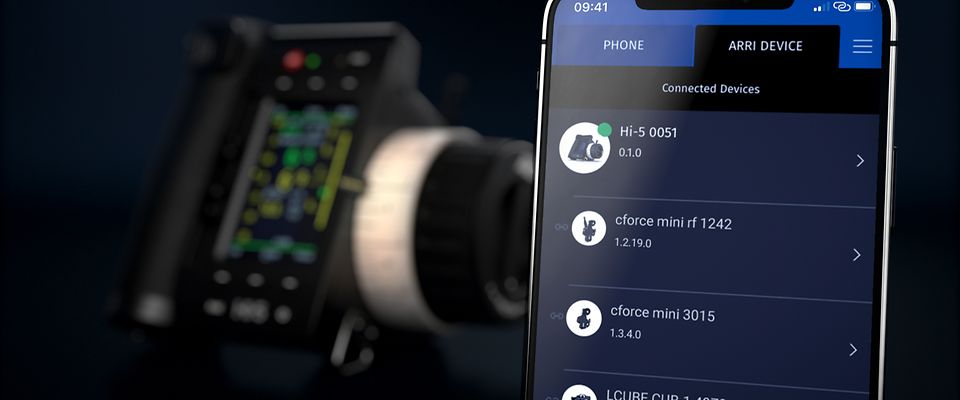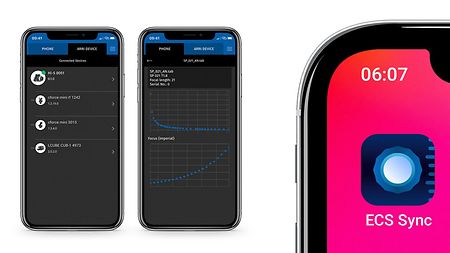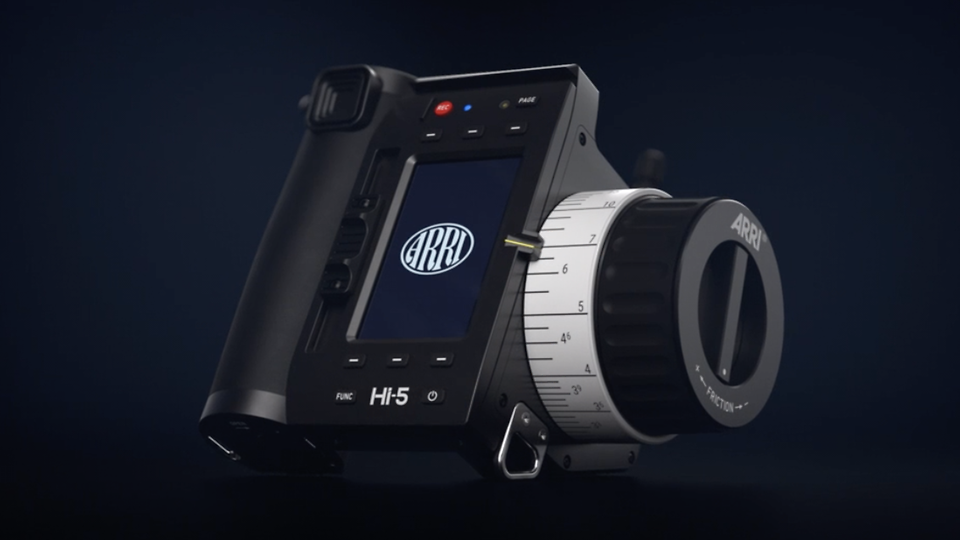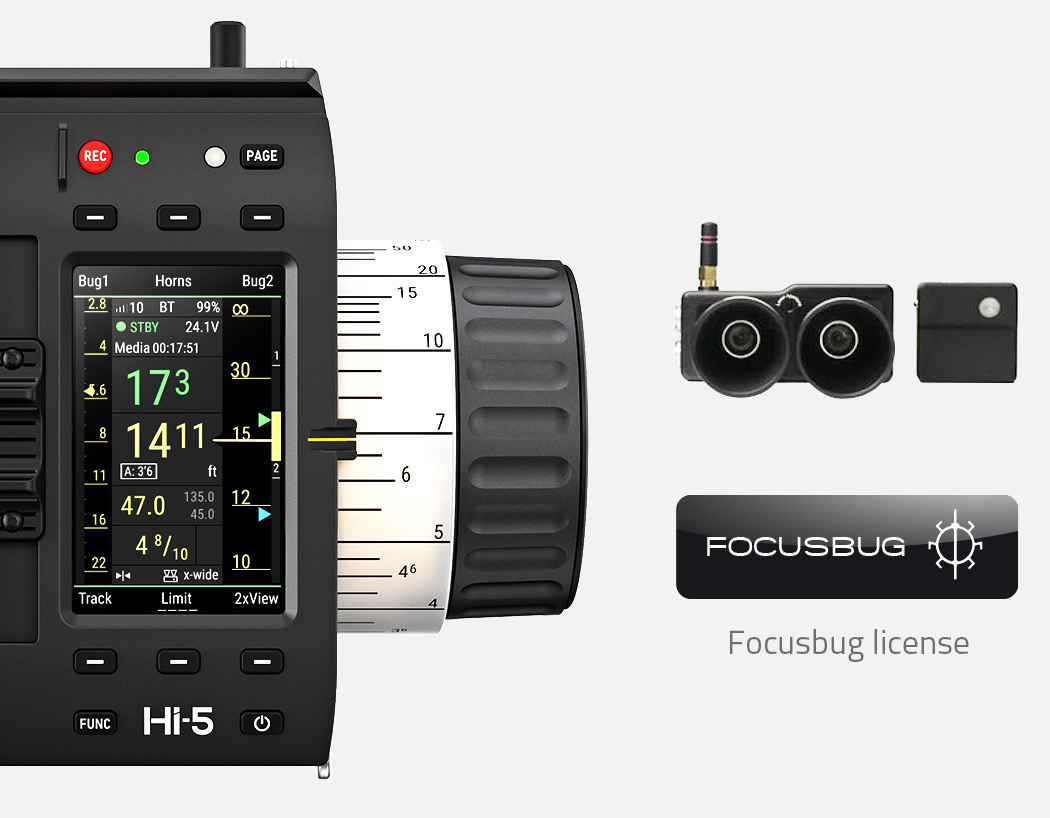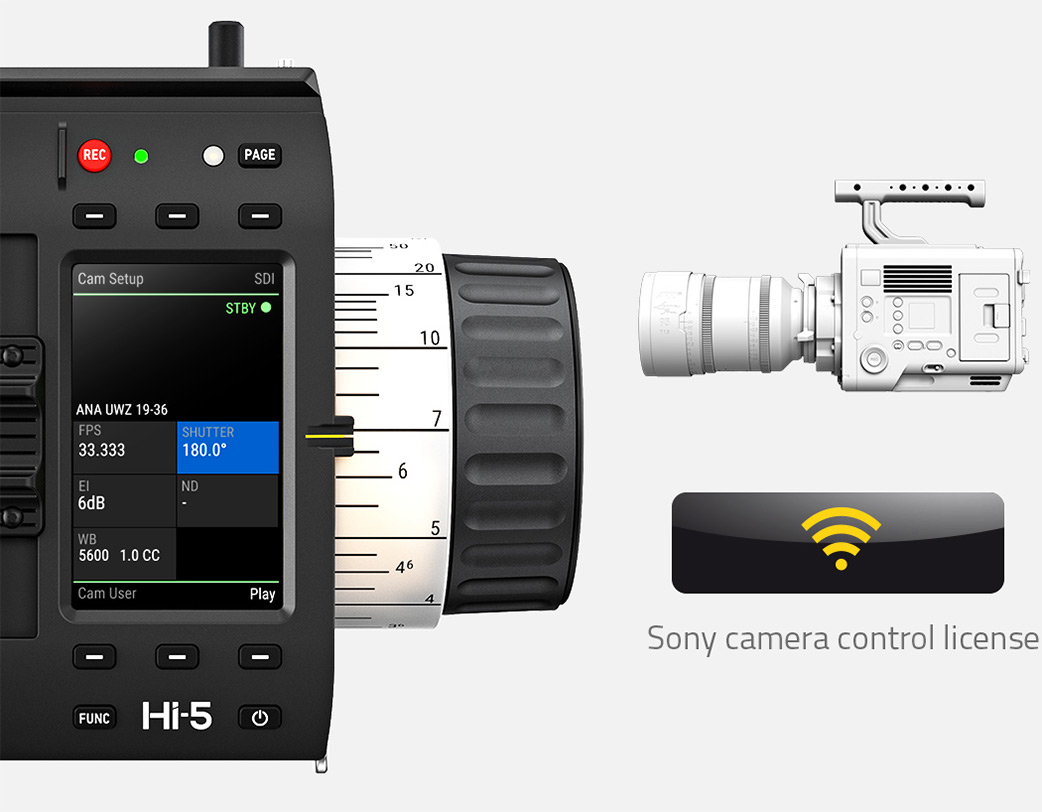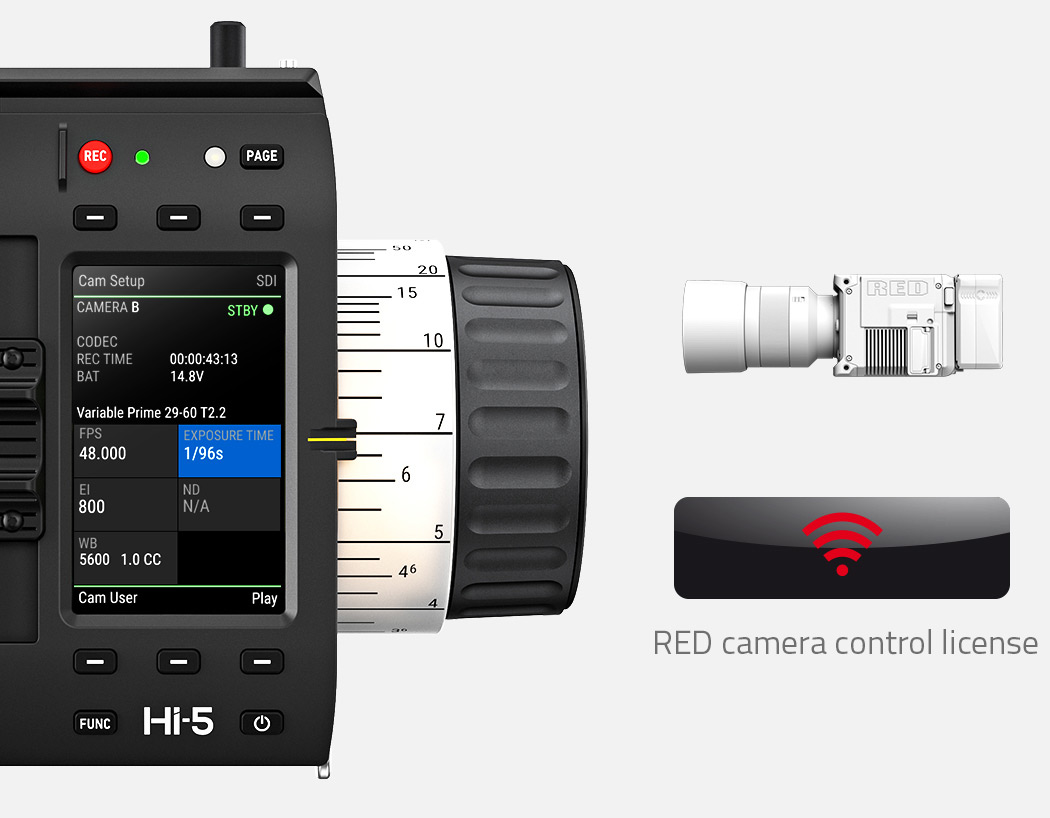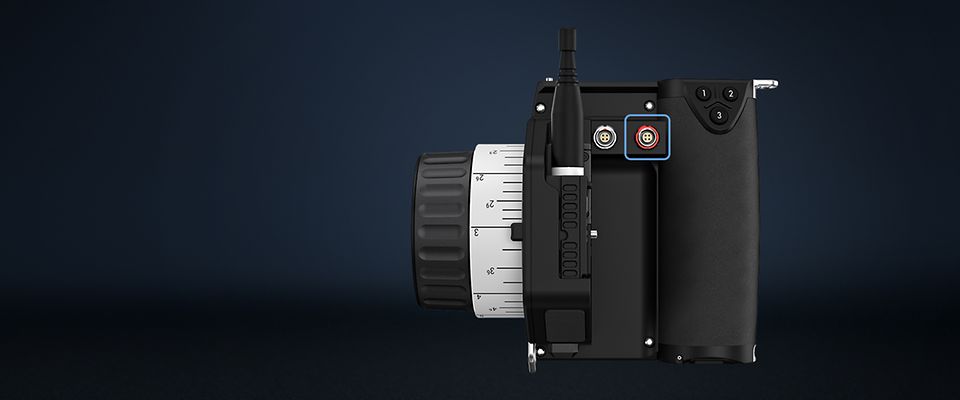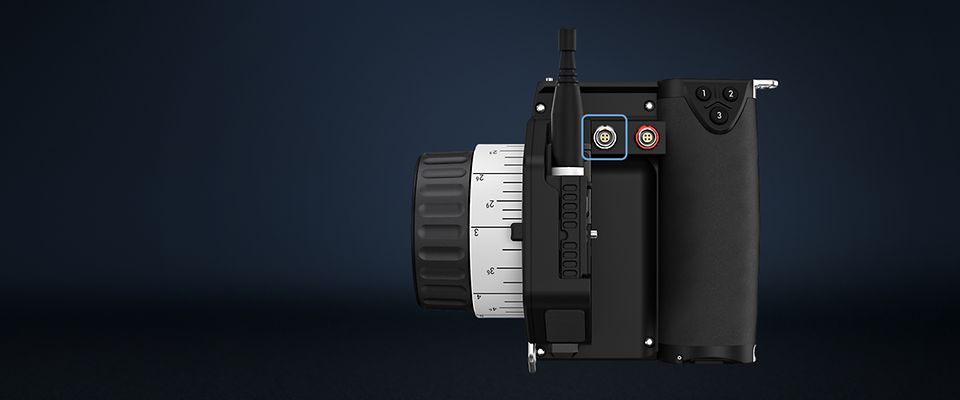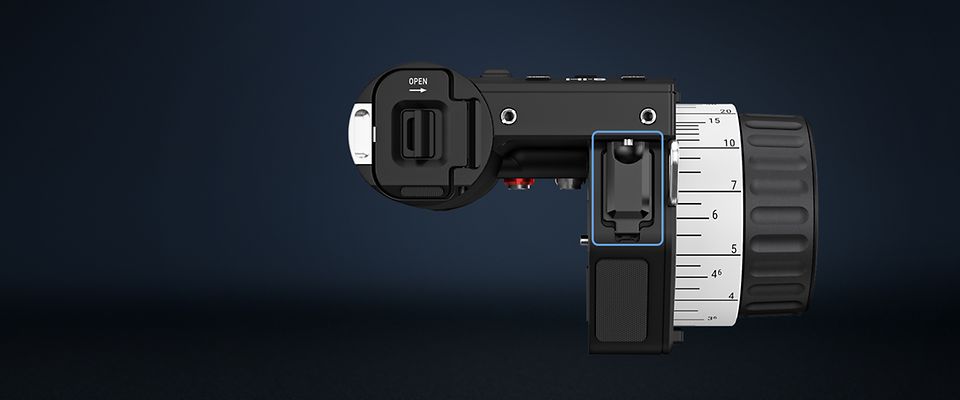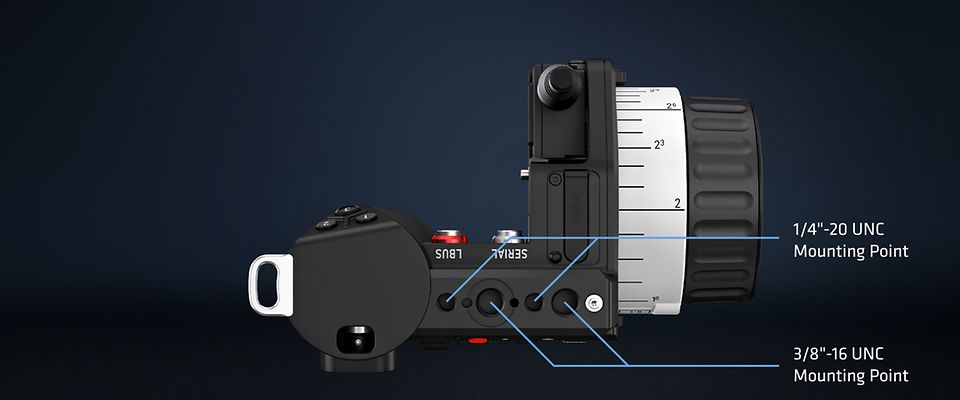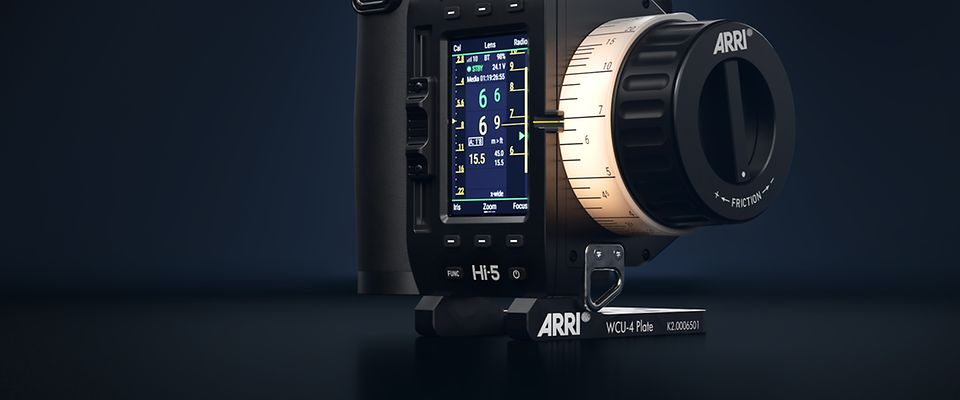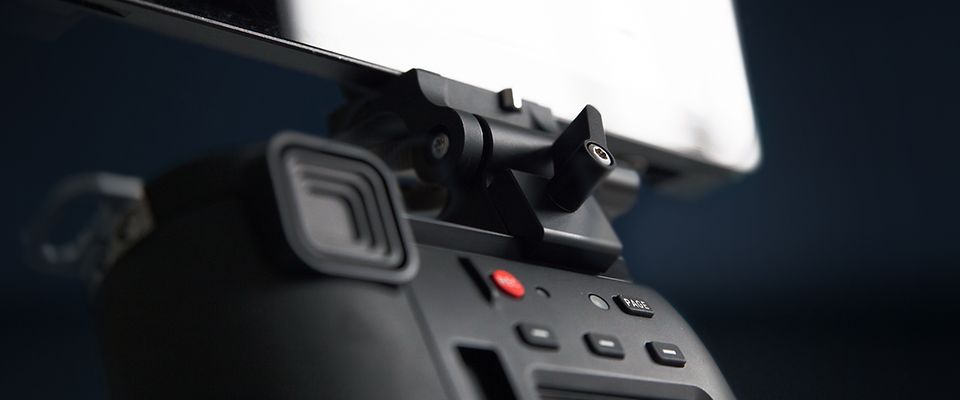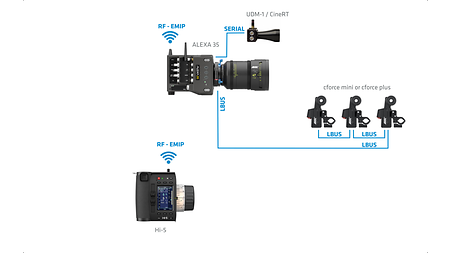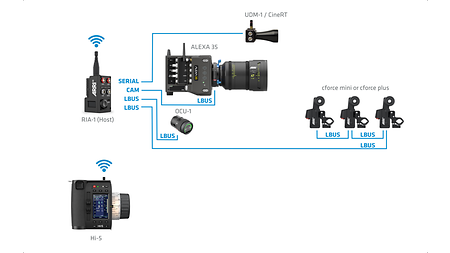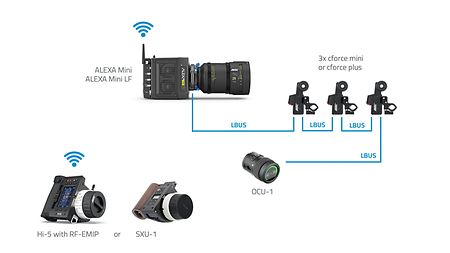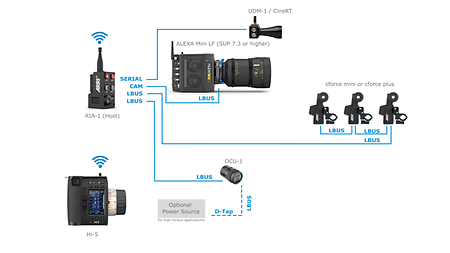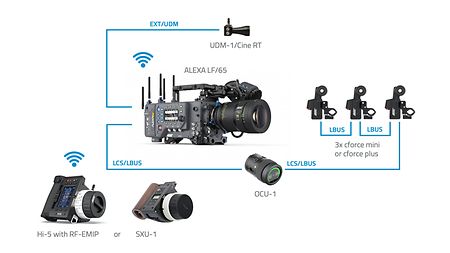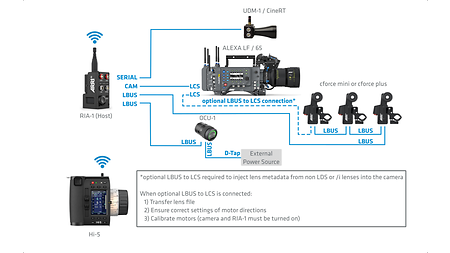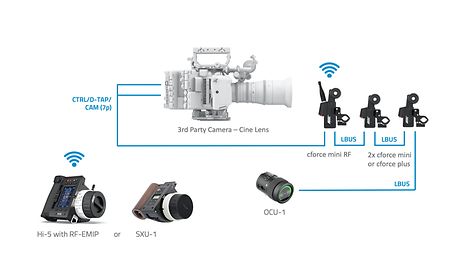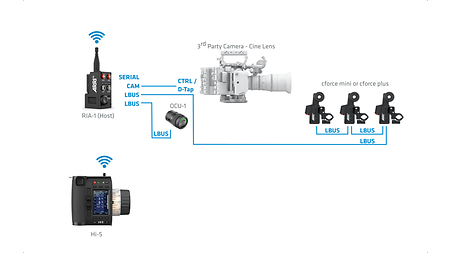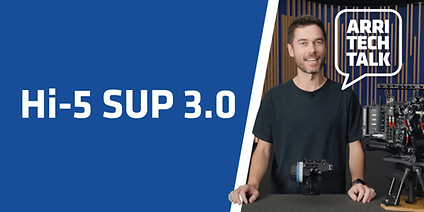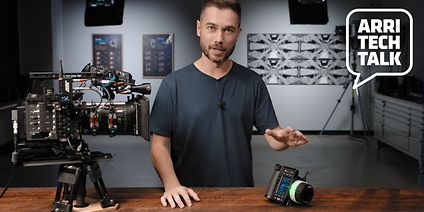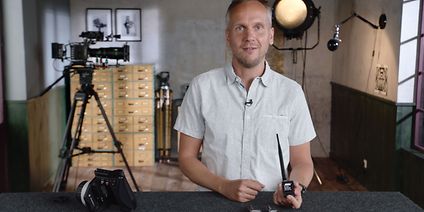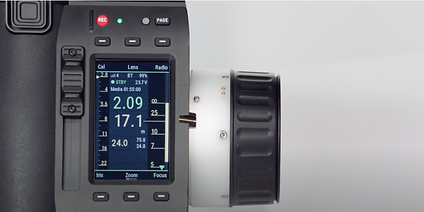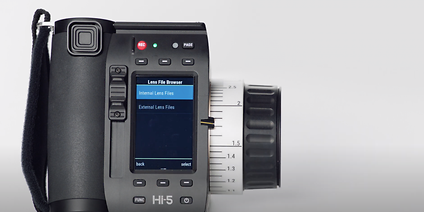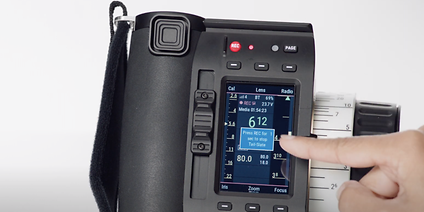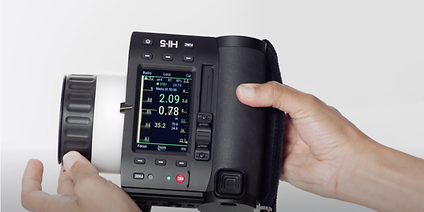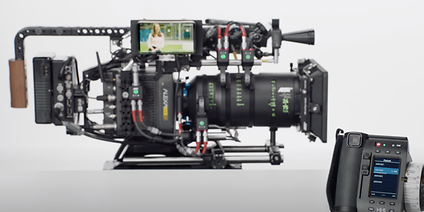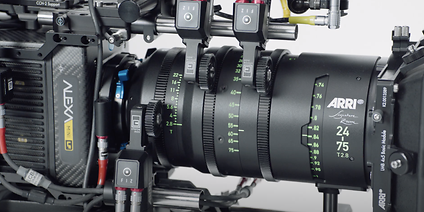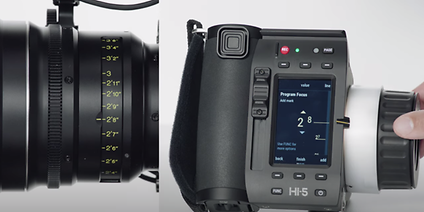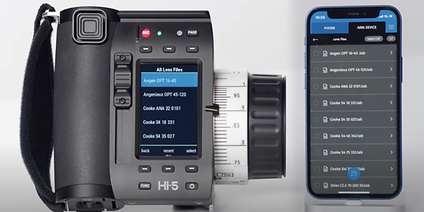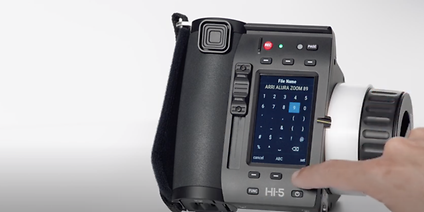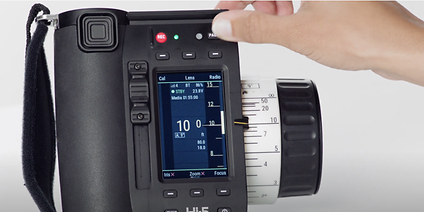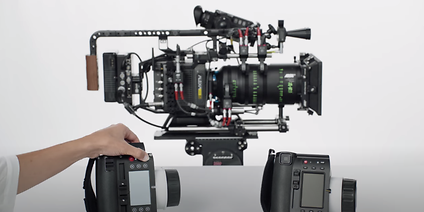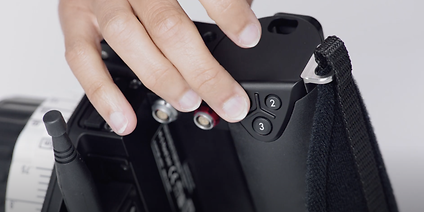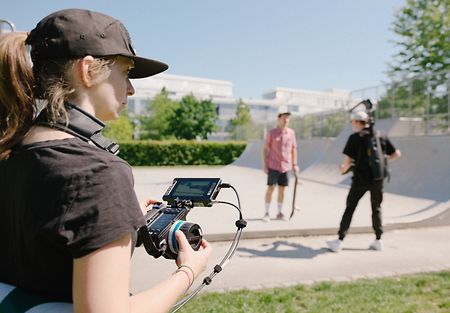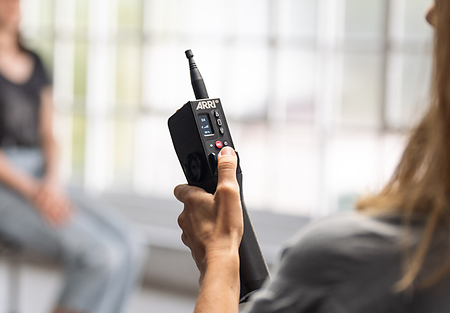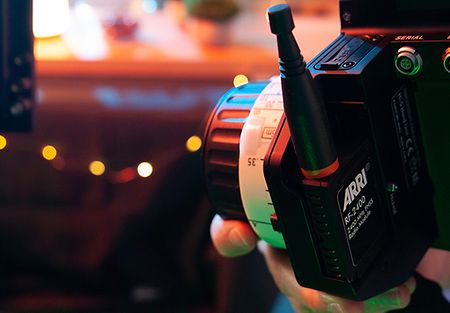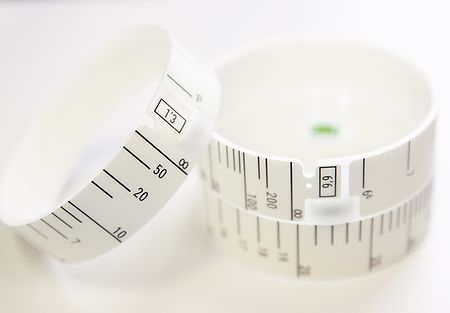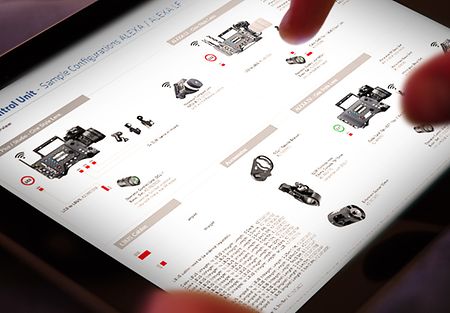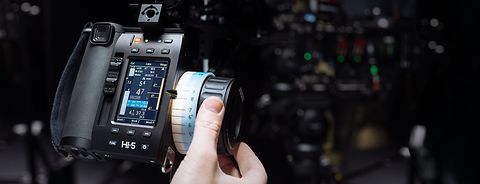
Hi-5 FAQ
-
A lens table is transmitted to the Hi‑5 from the camera device where the lens data is generated. ALEXA Mini and Mini LF cameras, the Universal Motor Controller UMC-4, the cforce mini RF lens motor, and the Radio Interface Adapter RIA‑1 all support wireless lens file transfer. Classic ALEXA cameras including the Plus module load lens files from an SD card.
-
Lens data is generated on the camera side and displayed on the Hi‑5. The data is generated in one of two ways:
- From LDS lenses, via the internal lens encoders
- From the Lens Data Archive (LDA), via the motor encoders
-
The Lens Data Archive (LDA) is an archive that contains lens tables. Those lens tables set the raw motor encoder values in correlation to the actual lens scales. Once you choose the right lens table from the Lens Data Archive and calibrate your lens motors, you get the same type of lens data as an LDS lens would deliver. You can create your own lens tables for any given lens with the Hi‑5 and save them internally, externally to a USB-C flash drive, or in an iOS device with the ECS Sync App. Lens tables can then be transferred wirelessly from Hi‑5 to the ALEXA Mini/Mini LF, the Radio Interface Adapter RIA‑1, the Universal Motor Controller UMC-4, or the cforce mini RF lens motor.
-
Yes, you can use the cforce mini RF with the Hi‑5 when equipped with the white-coded RF-EMIP Radio Module.
-
There are many different lenses on the market and we do not have an individual pre-marked ring for all of them. We do have 10 pre-marked rings with metric scale and 10 with imperial scale. These rings can be mapped to any given lens by using the Lens Data Archive (LDA).
-
There are various ways to make good use of pre-marked rings. You can choose the ring marked with a close focus or minimum object distance (MOD) that is nearest to – but less than – the MOD of your lens. For example, if your lens MOD is 16”, you would choose the 14” focus ring. Or you simply select the ring with the focus scale spread that best matches your scene.
-
The following WCU‑4 pre-marked rings are compatible with the Hi‑5:
Metric: 0.20 m, 0.25 m, 0.35 m, 0.50 m, 1.00 m
Imperial: 3’6, 20” (= 1’8)
-
It depends on which exchangeable radio module is being used. With the RF-EMIP radio module, the battery lasts up to 15 hours.
-
Yes, it is. The Hi‑5 indicates the override mode, which is triggered by the Operator Control Unit OCU‑1 or the Master Grips. The override function enables operators to return focus, iris, or zoom control to the OCU‑1/Master Grips at the touch of a button.
-
Manual calibration requires a software update and will be supported at a later point in time.
-
Yes, you can use the Hi‑5 hardwired connected to the camera or motor controller via the LBUS (4p) interface on the Hi‑5. The following cable connection is supported:
- Hi‑5 (LBUS) to (LBUS) lens motors
- Hi‑5 (LBUS) to (LCS) camera or motor controller
-
Yes, you can use the Hi‑5 with any camera, by using the Radio Interface Adapter RIA‑1 with one of our new radio modules (RF-EMIP, RF-2400, RF-900) connected to the camera via the CAM (7p) interface on the RIA‑1.
The following cables are available:
- K2.0015758 Cable CAM (7p) – RED CTRL/D-Tap (0.6 m/2’)
- K2.0018814 Cable CAM (7p) – Sony Venice/F55 CTRL/D-Tap (0.6 m/2’)
- K2.0015757 Cable CAM (7p) – LANC/D-Tap (0.6 m/2’)
If the Cable CAM (7p) is too short, you can use following cable as a CAM cable extension:
- K2.0023832 Cable CAM (7p, f) – CAM (7p, m) (0.3 m/1’)
Alternatively, you can use the Universal Motor Controller UMC-4, the cforce mini RF, or the Mini Motor Controllers AMC-1, SMC-1 and EMC-1 with the RF-EMIP attached to the Hi‑5.
Video Room
Technical data
Focus Knob: | LED backlit rotary knob with adjustable friction, 3.0” diameter, 16 bit native encoder resolution |
Iris Slider: | Fully sealed slider mechanism, 14 bit native encoder resolution |
Force Pad: | Force sensitive joystick, x/y-direction |
Display: | Transflective TFT-LCD display (readable in bright sunlight) 3.0" diagonal |
Weight: | 830 g / 29.30 oz (incl. Bluetooth dongle and Smart Focus Ring Blank) |
Interfaces: | 1x LBUS (4pin Lemo) 1x SERIAL (4pin Lemo) 1x Radio Module Interface 1x USB-A 1x USB-C |
Power Supply: | ARRI LBP-3500 battery pack LBP Battery Charger NP-F550 battery (Sony) or compatible batteries Power via USB-C port through an external power supply Power via LBUS interface |
Supply Voltage: | LBUS interface: 10.5 V – 34.0 V Battery: 7.4 V |
Power Consumption: | Without radio module: 222 mA @ 7.4 V With RF-2400 radio module: typ. 370 mA @ 7.4V With RF-900 radio module @ 100 mW: typ. 330 mA @ 7.4 V With RF-900 radio module @ 1 W: typ. 480 mA @ 7.4 V |
Operating Temperature: | -20°C to +50°C (-4°F to +122°F) |
Downloads
Get in touch
Contact me for an offer and keep me updated on product news.








